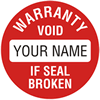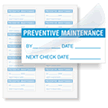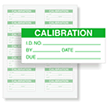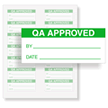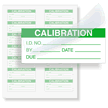But, make sure that they are big enough to read.
Find the calibration label design and label shape/size that best fits. The larger the label, the easier it is to write legibly. Unless required for the tiniest of instruments, the larger labels are generally the better choices. They are often no more expensive and will not only be easier to complete in the field - but will also be more legible.
Calibration labels can be positioned almost everywhere. Yet, they need to be both out of harms way and easy to find. They should not be placed where someone is tempted to pick at the label or, benignly vandalize your label. A thin profile is best. Traditional spots are near the equipment nameplate or on the side of the instrument panel. Avoid placing the calibration labels in areas that attract frequent wear (e.g. a label position that is next to a handle or control pad).
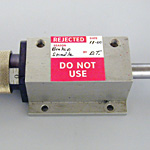
Combo Labels: Notify staff of two messages with one label. Save time and money. Two for the Price of One!.
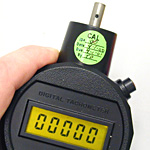
Circular calibration labels are increasingly popular. They get noticed faster and colored labels stand out from the background.
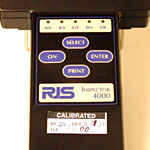
When placing a calibration label on the front of an instrument, note that you may be subjecting the label to increased wear and temptation for removal. Many companies prefer to situation their calibration labels on the side of the instrument.


